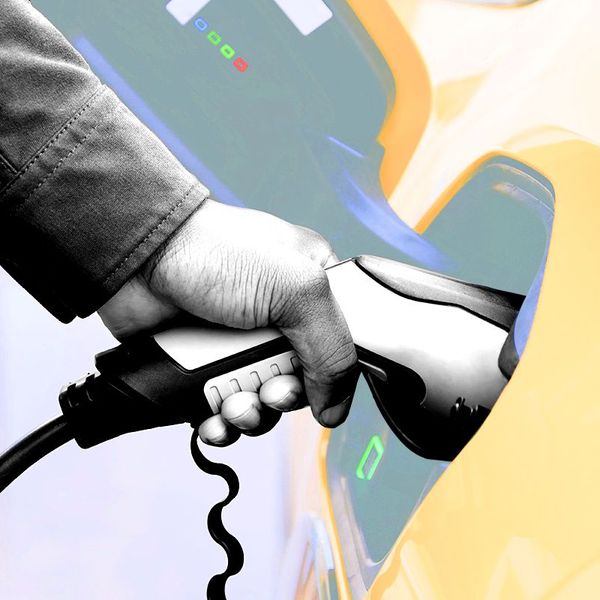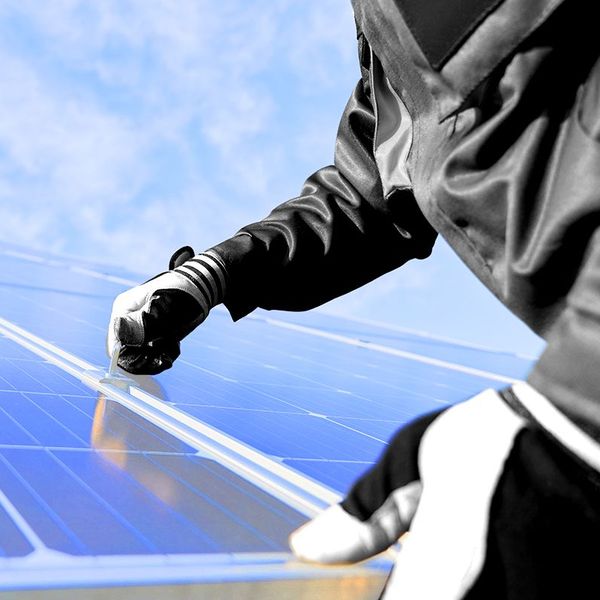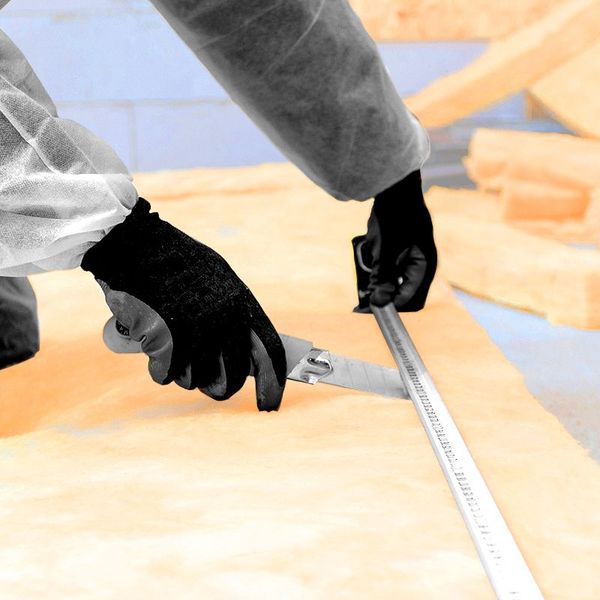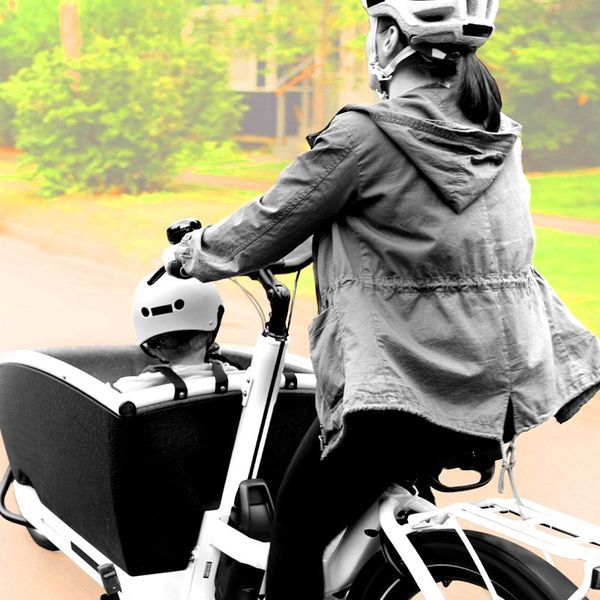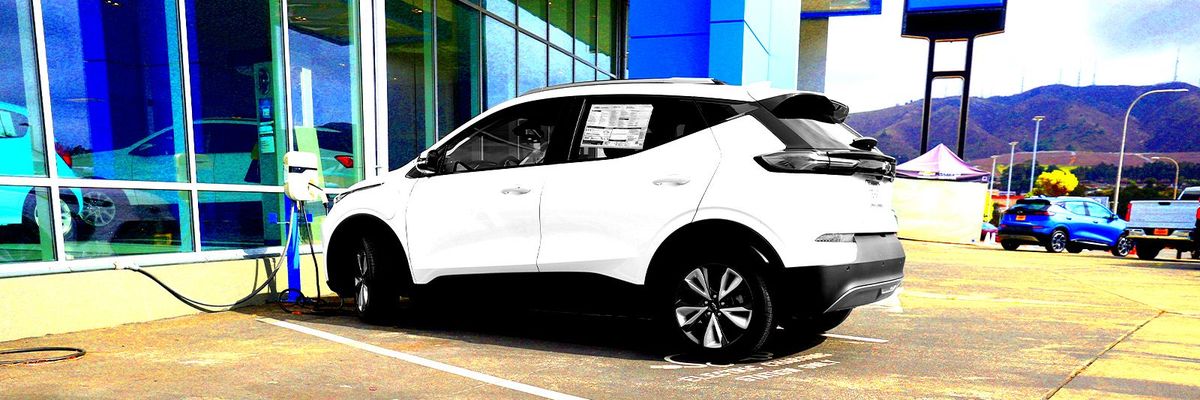Welcome to
Decarbonize Your Life, Heatmap’s special report that aims to help you make decisions in your own life that are better for the climate, better for you, and better for the world we all live in.
This is our attempt, in other words, to assist you in living something like a normal life while also making progress in the fight against climate change. That means making smarter and more informed decisions about how climate change affects your life — and about how your life affects climate change. The point is not what you shouldn’t do (although there is some of that). It’s about what you should do to exert the most leverage on the global economic system and, hopefully, nudge things toward decarbonization just a little bit faster.
We certainly think we’ve hit upon a better way to think about climate action, but you don’t have to take our word for it. Keep reading here for more on how (and why) we think about decarbonizing your life — or just skip ahead to our recommendations.
A better way to think about individual action
At this point, everyone knows that individual action won’t solve climate change. Didn’t BP invent the term “carbon footprint” in 2004 so as to distract from fossil fuel companies’ guilt and greed?
As the journalist Rachel Cohen has observed, around the 2010s it became unpopular to believe that individual action could help address any major social problem. And sure, it’s true that only collective action — achieved through something like the political system — will let us eventually manage climate change at the global level.
But at Heatmap, we believe that that isn’t quite the whole story. Just because politics and collective action are the only things that can solve climate change doesn’t mean they are the only things that can do something about climate change. What’s more, the problem of carbon emissions — and the stickiness of fossil fuels — emerges from a tight knot of chemical efficiency, political power, and logistical lock-in. If individual consumers can pry at that knot, can make it a little easier to imagine a post-fossil energy system, then they can realize a zero-carbon world a little sooner.
High-leverage actions, not just low emissions
That way of thinking about climate change, however, requires us to think somewhat differently about how to take individual action in the first place. Often, when you read about how to fight climate change as a person or family, the advice assumes that you want to reduce your responsibility for climate change. You’re advised to turn down the thermostat in the winter (or turn it up in the summer), shut off the lights when you leave the room, and compost.
More ways to decarbonize
This advice assumes that the reader’s goal is to personally exculpate themselves or their family from global warming — and to assuage their own guilt for participating in a polluting system.
At its most sophisticated, this advice can be valuable insofar as it can help you cut your marginal carbon emissions. The most precise versions of these recommendations often speak in terms of emissions abatement: They might advise, say, that switching to a plant-based diet could save 0.8 tons of carbon emissions a year.
You’ll see some of that kind of recommendation in this project: It’s a valid way to think about individual actions, and it works especially well in some domains, such as food. But it’s not, in our view, the best way of thinking about individual action to fight climate change.
That’s because it is essentially impossible to exculpate yourself from climate change. That’s not being fatalistic. It’s just a fact. Simply by living in the year 2024, your life is enmeshed in a sprawling economic network that devours fossil fuels as its great lifestyle subsidy. Look out the nearest window — do you see cars, asphalt, power lines, sidewalks, buildings? Do you see steel-framed structures or a plane cutting its way across the sky? None of those things could exist without fossil fuels. And unless you’re looking into wild and unkempt wilderness (if so, lucky you!), then even the plants and grass out your window, the food in your pantry, grew up on fertilizer that was manufactured with fossil fuels. If you live in a rich or middle-income country, buy goods and clothes, eat food, use electricity, or even leave your house by any means other than walking, then you are responsible, to some degree, for climate change.
Trying to zero out your personal carbon footprint, in other words, is a fool’s errand. What you can do, however, is maximize the degree to which you’re building a new, post-fossil-fuel world.
To be clear, we don’t mean that in a woo-woo way. We’re not saying you should imagine a kumbaya world where we all hold hands and take public transit to the nearest all-volunteer renewable-powered co-op. We’re saying that there are real, already existing products and technologies that must become a bigger part of today’s built environment if we are to have any hope of solving climate change. What you can do — and what we recommend in this guide — is help take those technologies from the fringes into the center of everyday life. If you want to decarbonize the whole planet, you should think about decarbonizing your life.
What we have tried to do here is not focus on how to reduce your marginal emissions — the number of tons that you, personally, are responsible for pumping into the environment. Instead, we’re trying to help you understand how to focus on high-leverage actions — the kinds of choices that can drive change throughout the energy system. That’s why in this guide you’ll find advice on how to switch to an EV, buy zero-carbon electricity, make your home more energy-efficient, and electrify your appliances. We also recommend these in the order that we think they’ll be most effective — to learn more about how we reached that ranking, read about our methodology here.
The kind of shifts we advise in this guide, to be clear, won’t solve climate change on their own. But they will help you alter the systems in which you’re enmeshed, and they’ll make you a smarter climate citizen.
What about flying?
Flying is maybe the trickiest climate question. Although it makes up a relatively small share of both global and U.S. emissions — about 2% each — it is among the most climate-polluting activities many Americans will do on a minute-to-minute basis. (Although if you live in a dense and walkable city like New York, San Francisco, or Washington, D.C., but travel frequently, then flying may make up a large share of your emissions.) It is probably also the most difficult “everyday” activity to decarbonize.
There is no practical substitute for long-distance or transcontinental flying. Today, only one ocean liner regularly makes the journey from New York to London, and it departs from each city only once a month. And unless you hitch a ride on a container ship, there is literally no slow boat to China. If you want to travel abroad, then you must fly. Even within the United States, there is essentially no substitute for long-distance flights. Europeans and East Asians can rely on superior long-distance rail systems, but America’s extensive road network, unusually high infrastructure costs, sclerotic rail agency, and chronic lack of transit investment mean that Americans are stuck with flying or driving.
Commercial aviation is a miracle of the modern world: It facilitates a level of global connectedness and international communication that earlier generations could only dream of. Affordable and long-distance passenger flight is, in many ways, the crowning achievement of our highly technical society, and it allows for the amount of global immigration and mass tourism that defines the modern world. (If you have a private jet, of course, stop using it. Because so few people take each flight, private jets are uniquely destructive for the climate, emitting every seven hours what the average American emits all year.)
Fossil fuels’ weight and energy density is ideal for flying. There is, right now, no drop-in replacement for jet fuel that is being produced at scale. So while we have some advice about how to mitigate your climate pollution from flying, it won’t make up a large part of this guide. Reduce the number of flights you take if you can, sure, and take more direct flights if possible. But the truth is that for now, there are smarter and more high-leverage decisions that you can make.
Only decarbonization can get us closer to tackling climate change once and for all. Our belief at Heatmap is that if you care about climate change, then decarbonization — and not mere emissions reductions — should be your guiding star. If you want to follow that star, then read on.







